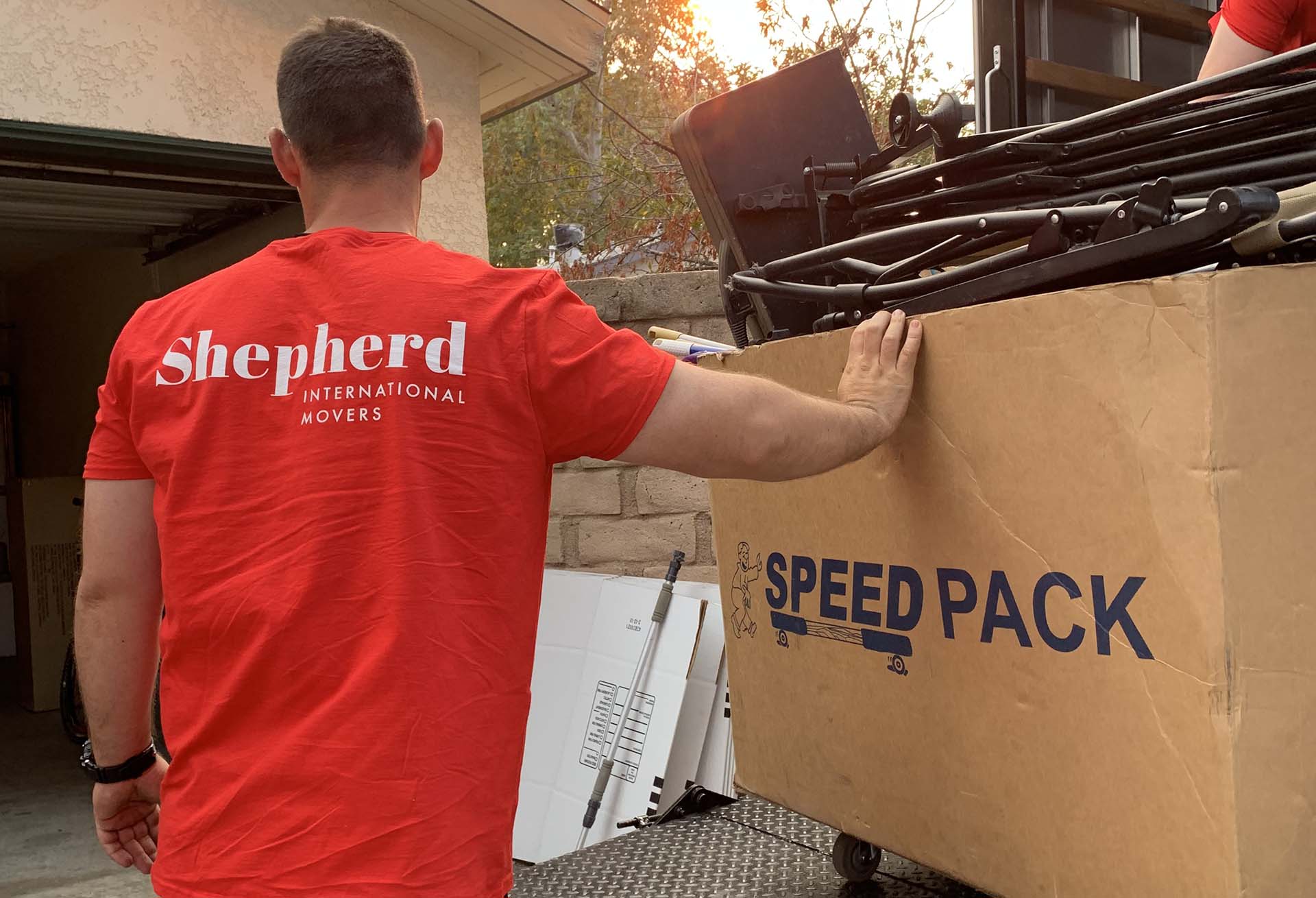

Are you wondering how to pack furniture for moving without getting injured? Whether you’re securing a heavy armoire or a delicate dresser, taking the time to plan ahead can help make the process smoother and safer – both for you and your belongings. Here are some tips on how to protect furniture when moving and avoid common injuries.
In order to pack furniture properly, you will need to gather all the necessary packaging materials, including blankets, corrugated cardboard, and plastic shrink wrap. To minimize the chance of any piece getting damaged during transport, ensure all the surfaces are covered. Handling heavy objects can be dangerous, so it’s important to use proper equipment and protective gear, as well as correct lifting techniques to avoid suffering an injury.
What to Do Before You Start Packing Furniture
Before you start packing, the first thing on your to-do list should be to inspect every piece and do some light cleaning so that dust doesn’t settle on the rest of the items during the move. After that, measure each item and make sure it can pass through the doorways. You don’t want to end up like Ross from Friends and “PIVOT!”.
Since you’ll be relocating across the world, know that disassembling larger pieces makes them much easier to move, and you won’t have to worry about them getting damaged in transport. Just don’t forget to secure all detachable and movable parts like drawers, doors, and legs.
How to Prepare Furniture for Moving? You Need Appropriate Packaging Materials
International moves are long and complex, and as with everything else, there are several materials for wrapping up furnishings that have to be on each what-to-pack list. If you want to avoid the unnecessary relocation stress and secure all the things you have at home, focus on getting enough:
- Protective or regular blankets,
- Bubble wrap,
- Plastic shrink wrap,
- Corrugated boxes,
- Special crating,
- Packaging paper,
- Strong duct tape,
- Clear sealable bags.
How Do You Pack Heavy Furniture?
Although it might not seem like it, knick-knacks and bulky objects are some of the hardest things to secure when moving overseas. This is because heavier items require good coordination, packing skills, and a lot of protective layers. If you are dealing with cumbersome pieces like precious armoires and antique dressers, you will need to make sure they are well protected during international moving and shipping.
How to Wrap Bulky Items Properly
So, what is the easiest way to transport furniture? For starters, there are never enough protective materials when it comes to wrapping furniture for moving. Make sure to wrap everything with blankets and leave no surface unprotected. Not getting enough materials is a common relocation mistake, though, so If you don’t have protective blankets, regular household blankets will do. To keep everything from unwrapping, cover each item with plastic shrink wrap or secure the wraps with tape.
Protect Fragile Glass Parts of Bulky Furniture
How do you pack furniture for cargo if it’s delicate? Glass doors, showcases, fragile shelving, and all other delicate objects have to be well protected and placed in a safe space where other stuff can’t damage it, fall on it, or where it can move around too much and get broken. All in all, just follow the usual tips for securing fragile items, and you’ll be fine.
Don’t Forget to Pack All the Bolts and Screws Before Moving
During the disassembly phase (which is obligatory during the move,) make sure not to lose any parts needed for the reassembly. By that, we mean all bolts, screws, lugs, nuts, and the rest of the fastening elements. Our best tip is to put all bolts and screws in a sealable, clear bag, which you’ll then label and place next to the piece it belongs to.
Best Tips for Packing Bulky Furniture
Now that we went through some of the basics you needed to know, let’s go over some additional tips you will use when packaging your bulky belongings:
- Prepare all supplies and materials in advance before you start packing.
- Don’t leave a surface without a cover. You never know what might happen during the relocation process, so pad any sharp edges or corners with bubble wrap or packaging paper.
- If possible, pack everything in original boxes. This will help keep it stable and protect it from damage. If you didn’t keep those like most people, you could use corrugated cardboard or special crated boxes for more expensive items.
- Use plenty of tape to secure wrapped pieces.
How to Avoid Injuries When Moving Heavy Objects
One of the most important things to remember when moving abroad is to be careful and avoid any injuries. You don’t want to risk permanent damage to your spine or knees when it’s cheaper to get packing services and hire professional movers who know what they are doing. Here are some tips for avoiding injuries when handling heavier pieces:
Use protective gear
Handling heavy objects is everything but easy, and wearing gloves can prevent them from slipping out of your hands and breaking your foot. You also want to use comfortable shoes or protective boots to avoid stubbing your toe on all the boxes you will be surrounded with.
Clear the route to the truck
As you can imagine, most furnishings are, well, heavy, so you want the process of carrying them to be as short as possible. Clear the route of all possible debris, and make sure nobody gets in the way when the heavy lifting starts. Cover all sharp edges along the way and be vary around them.
Utilize relocation equipment
Dollies, sliders, and similar tools will allow you to transport heavy items and load them on the truck much more easily.
Learn proper lifting techniques
As professional lifters and bodybuilders would say: “Always bend at the knees” and keep your back straight to avoid injuries. Find the center of gravity, carry everything close to your body, and avoid making any unnecessary movement.
Get someone to help you
Don’t be a hero! Don’t move the entire couch or a fridge all by yourself. It’s smarter to get assistance.
See the Proper Lifting Techniques in Action
While everything we mentioned should provide you with all the information you need to perform a heavy lift safely, sometimes it’s much easier to learn after seeing the process in action. If that’s the case for you, we highly recommend you check out this video about proper lifting techniques.
Now That You Know How to Pack Furniture, Let’s Wrap This Bulky Article Up!
Whatever your reason for relocating may be, it won’t be difficult to pack your furniture properly if you follow our advice. However, be aware that there are still a lot of specifics we haven’t gone into, like how do you pack wood furniture for moving. If you don’t have a lot of time before the big move and want to avoid getting injured, consider hiring a professional international moving company to come pack and load everything for you – especially if you have expensive or delicate items at home.







